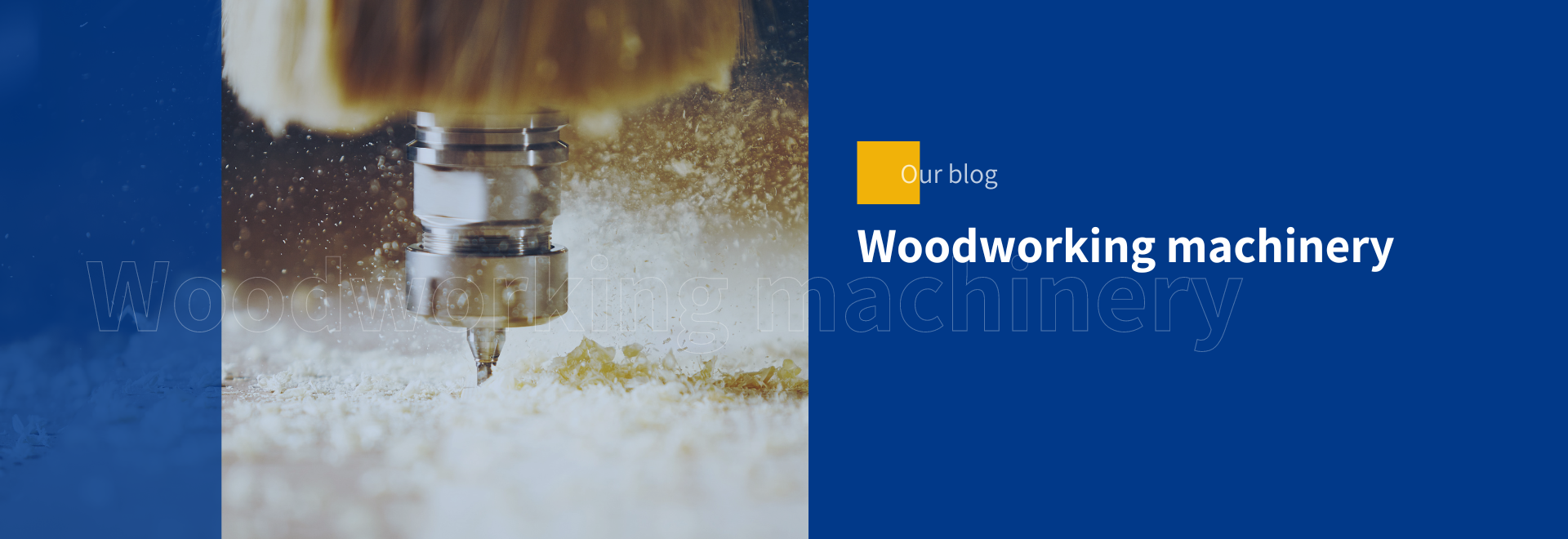
The art of woodworking has evolved significantly with the introduction of modern machinery technologies. These tools not only improve the quality of finished products but also significantly optimize production processes, merging tradition and innovation in the craft sector. From cutters to trimmers, each machine has a specific and fundamental role, contributing to increased efficiency and reducing the time required for production. In this article, we will explore some of the most important and indispensable machines for woodworking, discussing how each of them facilitates and transforms woodworking, making it more precise and less costly.
What machinery is used in woodworking?
In the world of woodworking, the efficiency and precision of the tools used can make a difference in the final outcome. Woodworking machines are designed to optimize work and improve the quality of finished products. Let’s explore some of the main machines used in this sector.
Veneer pack guillotine shears
Veneer pack guillotine shears are fundamental machines in the woodworking sector, valued for their ability to make quick and precise cuts with minimal environmental impact. One of their most distinctive features is that they do not require a suction system. This makes knife cutters particularly suitable for work environments where managing dust and processing waste is a challenge. Without the need for complex waste management systems, these machines offer a “clean” solution, ideal for enclosed spaces or workshops that aim to maintain a healthier work environment. Additionally, their quiet operation further improves the quality of the operating environment, reducing noise, which can be a significant factor of stress and distraction for operators. These aspects, combined with the precision of the cut, make cutters indispensable tools for those seeking efficiency and cleanliness in the woodworking process.
Discover our models of veneer pack guillotine shears.
Trimming Machines
Trimming machines represent another vital category of woodworking machines, specialized in the precise cutting of veneers and other wood materials. Equipped with powerful circular saws, these machines can handle varying thicknesses, ensuring a clean and defined cut that is fundamental for high-quality finishes. Their use is particularly valuable in operations where precision is crucial, such as in creating invisible joints or preparing surfaces for further processing. The ability of trimmers to maintain consistency in cutting across different batches of material is essential to ensure uniformity in large-volume projects or batch jobs. Additionally, the versatility of trimmers allows operators to easily adapt them to various types of work, making them indispensable tools in almost any woodworking workshop.
Discover our models of wood trimming machines.
Splicing machines
Splicing machines are essential tools in the woodworking industry, particularly appreciated for their ability to effectively join sheets of veneer. They use a thermofield glue thread that, once heated, allows for a quick and durable connection of different wood pieces. This technology represents the simplest and most economical method to ensure solid and nearly invisible joints, a feature indispensable in many high-quality applications, such as furniture and decorative panel production. The ease of use and speed of the joining process offered by jointers reduce processing times, increasing production efficiency. Furthermore, the robustness of the joints made with this method improves the durability of the finished product, a significant advantage for both producers and consumers. These machines, therefore, not only optimize production processes but also elevate the quality standards of products in the woodworking sector.
Discover our models of wood splicing machines.
Chopping machines
Chopping machines are essential in the efficient management of waste in the woodworking sector. These machines are designed to shred wood waste from single-blade and double-blade cutters, transforming it into smaller particles that can be easily managed or reused. Equipped with robust cutting systems, which include sharp blades and counter-blades, shredders significantly reduce the volume of waste, facilitating its disposal or recycling for the production of other products, such as particle boards or biomass. The use of chopping machines not only helps maintain a clean and tidy work environment but also helps reduce the environmental impact of the wood industry, promoting sustainability practices through the recovery of materials otherwise considered waste. This ability to transform waste into useful resources underscores the importance of shredders in the wood production cycle, making them indispensable for companies aiming to operate responsibly and efficiently.
Discover our models of chopping machines.
Edge systems
Edgebanding machines are advanced and multifunctional machinery essential for optimizing edge processing in wood. These machines integrate various functions such as cutting, dovetail jointing for veneers, and wrapping of veneer tapes, making the edge finishing process efficient and precise. The ability to perform these operations continuously and automatically not only speeds up production but also ensures high consistency and quality of the final product. In particular, the dovetail joint is fundamental to ensuring that edges are not only aesthetically pleasing but also structurally robust. The use of these plants allows for the treatment of a variety of materials and thicknesses, offering great flexibility to furniture and wood panel manufacturers.
Discover our edge systems.
Guillotine Shears
Guillotine shears are powerful and highly specialized machines used in the woodworking sector to cut robust and thick materials. Designed to offer precision and efficiency, these shears can provide clean and neat cuts, ensuring high-quality results. Their robust structure and sharp cutting mechanics allow them to tackle even the most challenging materials without effort, reducing the risk of burrs or damage to the material. This type of precision is essential for projects that require tight tolerances and perfect finishes. In addition to their efficiency, guillotine shears are appreciated for their durability and minimal maintenance required, making them a cost-effective choice in the long run for woodworking shops. Moreover, their ability to operate quickly significantly improves productivity, making guillotine shears a crucial component in the equipment of any serious woodworking workshop.
Discover our models of guillotine shears.
Clamps forDrawer
Drawer clamps are specialized machines designed to facilitate the assembly of drawers, a fundamental operation in furniture production. These machines are particularly useful for ensuring that drawers are assembled with precision and robustness, essential elements for the durability and functionality of furniture. Drawer clamps allow for the application of uniform pressure along the joints of the drawer, ensuring that the adhesives used in construction dry optimally and form solid connections. This process not only improves the quality of the finished product but also accelerates production times, allowing for quick and efficient assembly. The ease of use of these clamps makes them accessible even to less experienced operators, reducing the training time required and increasing overall productivity. In summary, drawer clamps are indispensable in any workshop that produces furniture, as they guarantee the quick, precise, and quality assembly of drawers.
Discover our models of Clamps for Drawer.
Drilling and inserting machines for hinges
Drilling and inserting machines for hinges are essential machinery in the furniture production sector, specialized in the precise placement and insertion of hinges in furniture. These machines automate two of the most delicate processes in furniture construction: drilling and inserting hinges, ensuring that each component is correctly mounted to ensure functionality and aesthetics of the furniture. The precision of these machines is crucial to avoid alignment errors that could compromise the closing and opening of furniture panels or doors. Additionally, the ability to work quickly and accurately significantly reduces production time and improves operational efficiency. By using hinge drilling and insertion machines, manufacturers can rely on technology that not only speeds up production but also ensures a high standard of quality, contributing to the final customer’s satisfaction with durable and well-constructed products.
Discover our models of drilling and inserting machines for hinges.
Each machine has a specific role that contributes to the efficiency and quality of the woodworking process, making it possible to produce high-quality wooden artifacts with less time and resources.
What does it mean to work wood with CNC machines?
The use of CNC (Computer Numerical Control) machines has profoundly transformed the field of woodworking, introducing levels of precision and efficiency previously unimaginable. CNC allows for the exact replication of cutting, drilling, engraving, and milling operations, greatly increasing efficiency and reducing the margin of error. Woodworking machines with CNC operate through advanced software that transforms digital designs into operational instructions for the machine, based on computer programs that direct woodworking tools with millimeter precision. This process begins with computer-aided design (CAD), followed by the programming of the tool path through CAM (Computer-Aided Manufacturing) software. The cutting coordinates and specifications are then sent to the CNC machine, which executes the operations with millimeter precision. This precision is one of the main advantages of CNC. For example, in the production of furniture or wooden components, the ability to replicate exactly the same measurements and shapes ensures not only consistent quality but also a trouble-free assembly, essential in mass productions or in complex designs that require a high degree of uniformity. Additionally, the use of CNC significantly reduces the margin of human error. Once set and programmed, CNC follows the instructions with a level of precision beyond manual capabilities. This not only improves the quality of the finished product but also reduces material waste, as operations are always performed within established parameters. The versatility is another significant advantage of CNC machines in the wood sector. These machines can perform a variety of operations such as cutting, drilling, engraving, and milling without the need to change equipment or manually configure settings. This changes the workflow in the workshop, allowing for a quick and smooth transition between different production stages. Automation also leads to an increase in workplace safety. With CNC machines, operators are no longer required to interact directly with moving parts or sharp tools. Consequently, the risk of injuries is significantly reduced, creating a safer work environment.
——
In conclusion, woodworking machines play a crucial role in the modern industry, transforming traditional methodologies and improving productivity and quality of products. From those that offer precise and clean cuts without the need for suction, like cutters, to those that allow robust and almost invisible assemblies like jointers, each machine has a significant impact on the final results. The ongoing innovation in CNC technology introduces new possibilities for precision and safety, reducing errors and risks in the workplace. With these advanced technological solutions, manufacturers can not only respond to the growing demands for efficiency and quality but also explore new creative frontiers in wood design and production. The adoption of such tools is not only an investment in efficiency but also a step towards sustainability and continuous innovation, testifying to the evolution of woodworking craftsmanship in the modern era.


